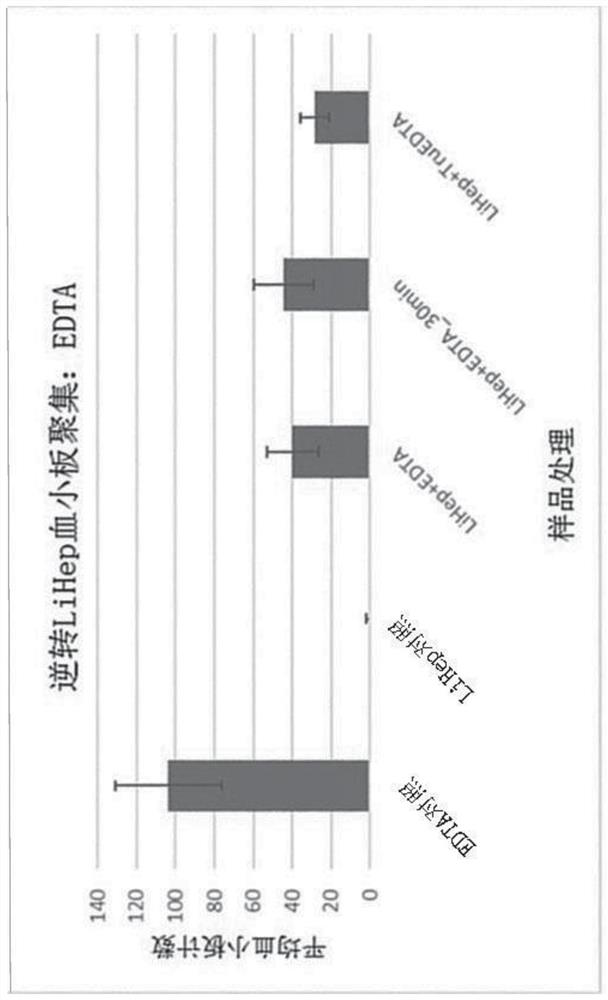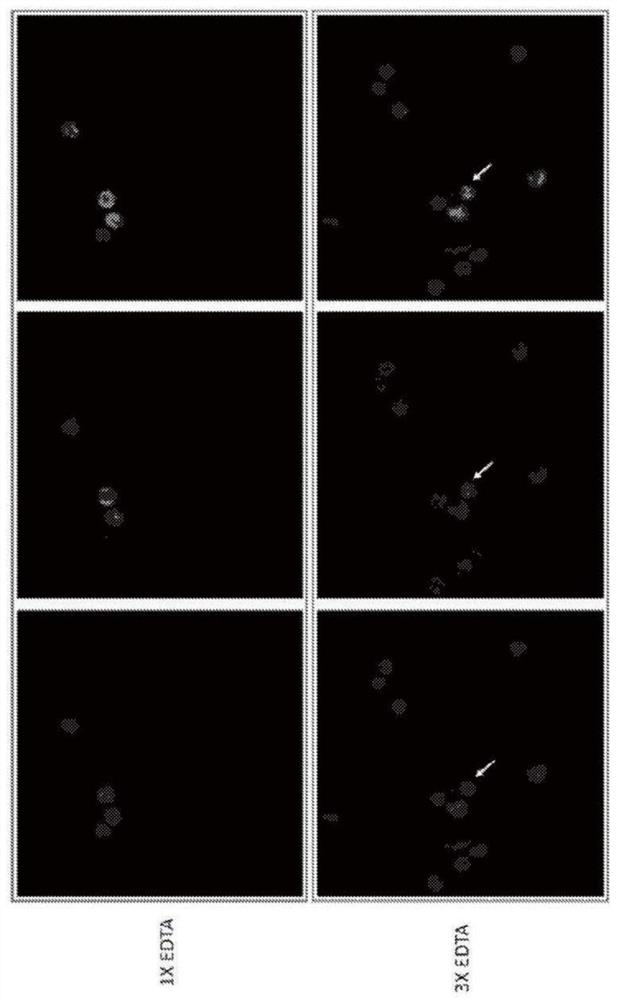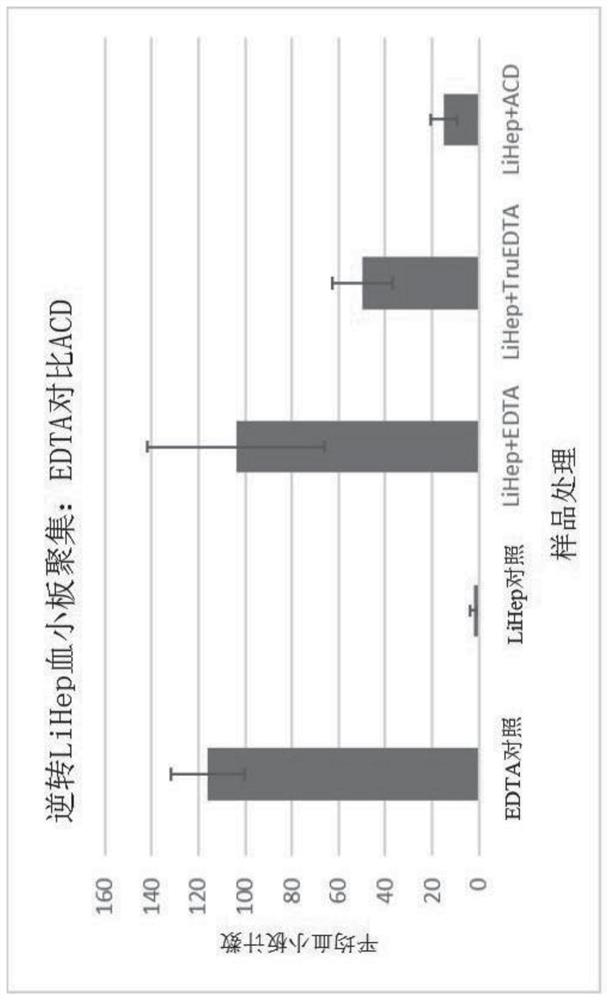Methods and compositions for reversing platelet aggregation
A platelet and platelet counting technology, applied in the field of platelet aggregation
- Summary
- Abstract
- Description
- Claims
- Application Information
AI Technical Summary
Problems solved by technology
Method used
Image
Examples
Embodiment 1
[0131] blood collection
[0132] The blood used in the following examples was obtained from a venipuncture sample or a fingertip sample. Following standard phlebotomy practice, donor venipuncture blood was collected in BD Vacutainer EDTA tubes or BD Vacutainer PST lithium heparin plasma separation tubes. Follow standard phlebotomy practices and collect donor fingertip blood in the LiHep SAFE-T-FILL TM Tube or EDTASAFE-T-FIL TM tube. All blood samples were stored at room temperature until use. Samples were analyzed within 12 hours of blood collection.
[0133] Significant platelet aggregation occurred in both venipuncture and fingertip blood collected in lithium heparin tubes. Platelet aggregation appears to occur spontaneously after blood collection. For all studies, EDTA control samples were used, where venipuncture or fingertip blood was collected into EDTA tubes. EDTA venipuncture control samples were collected into EDTA blood collection tubes from the same donor usi...
Embodiment 2
[0135] EDTA alone reverses platelet aggregation in LiHep samples
[0136] A series of anticoagulants were tested for their respective effects in reversing platelet aggregation formed in blood samples. Fresh fingertip blood samples were collected into EDTA blood collection tubes and LiHep blood collection tubes as described above. The concentrated EDTA was dried at room temperature in a microcentrifuge tube using a vacuum oven for at least one hour. Immediately after collection a 200uL fraction of the LiHep sample ("LiHep+EDTA") was passed through two separate EDTA SAFE-T-FIL TM The capillary is exposed to EDTA anticoagulant twice, resulting in a final concentration of EDTA in the blood of approximately 8.8 mM. An additional 200 uL fraction ("LiHep+TruEDTA") was added to the previously prepared vacuum-dried EDTA, resulting in a final EDTA concentration of 20 mM in blood. Thirty minutes after collection, another 200uL fraction of the LiHep sample ("LiHep+EDTA 30min") was pass...
Embodiment 3
[0140] High concentrations of EDTA negatively affect the morphology of leukocytes
[0141] Next, it was examined whether EDTA exposure would affect blood cell morphology. Specifically, fresh fingertip blood samples were collected into EDTA blood collection tubes and LiHep blood collection tubes. The concentrated EDTA was dried at room temperature in a microcentrifuge tube using a vacuum oven for at least one hour. A 200 uL fraction of the LiHep sample ("1x") was added to the previously prepared vacuum-dried EDTA, resulting in a final EDTA concentration of 20 mM in blood. An additional 200 uL fraction of the LiHep sample ("3x") was added to the previously prepared vacuum-dried EDTA, resulting in a final EDTA concentration in blood of 60 mM. All samples were pulse vortexed 3 times in 5 s bursts at the maximum vortex setting. The samples were then stained with AO. Add AO to blood samples to a final concentration of 10 ug / mL, pipette to mix and incubate at room temperature for...
PUM
 Login to View More
Login to View More Abstract
Description
Claims
Application Information
 Login to View More
Login to View More - R&D
- Intellectual Property
- Life Sciences
- Materials
- Tech Scout
- Unparalleled Data Quality
- Higher Quality Content
- 60% Fewer Hallucinations
Browse by: Latest US Patents, China's latest patents, Technical Efficacy Thesaurus, Application Domain, Technology Topic, Popular Technical Reports.
© 2025 PatSnap. All rights reserved.Legal|Privacy policy|Modern Slavery Act Transparency Statement|Sitemap|About US| Contact US: help@patsnap.com



